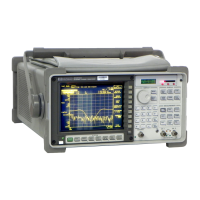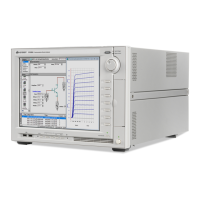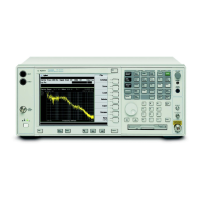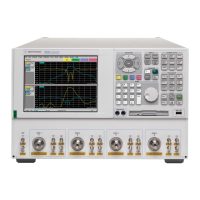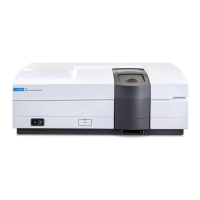Time Domain - Option 010 59
Gating
Perhaps the most beneficial feature of Time Domain transform is the Gating
function. When viewing the Time Domain response of a device, the gating
function can be used to "virtually" remove undesired responses. You can then
simultaneously view a frequency domain trace as if the undesired response did
not exist. This allows you to characterize devices without the effects of external
devices such as connectors or adapters.
Gating is best performed while viewing a Time Domain trace. Then, either disable
Transform, or separately view a frequency domain trace to see the trace with the
gated effects removed.
NOTE When a discontinuity in a test device reflects energy, that energy will not reach
subsequent discontinuities. This can "MASK", or hide, the true response which
would have occurred if the previous discontinuity were not present. The Gating
feature does NOT compensate for this.
How to make Time Domain Gating settings
Press Measure 4
Then Transform
Then Gating
Then choose from:
o On Gating is being performed.
o Off Gating is NOT being performed.
Start, Stop, Center, and Span Gate Times
These settings specify the time in the trace to be gated (in or out). The gate times
can be specified using either Start and Stop or Center and Span.
Press Gating Start/Stop
A settings table appears that allows you to navigate and select the following
settings. These settings are made exactly like those made on the Transform
Settings table. Learn how on page 54.
Gating Type
This setting defines the type of filtering that will be performed for the gating
function. The gate start and stop flags on the display point toward the part of the
trace you want to keep.
Choose from the following:
o Bandpass - KEEPS the responses within the Gating Start and Stop times.
o Notch - REMOVES the responses within the Gating Start and Stop times.
Gating Shape
This setting defines the filter characteristics of the gate function. Choose from
Minimum, Normal, Wide, Maximum.

